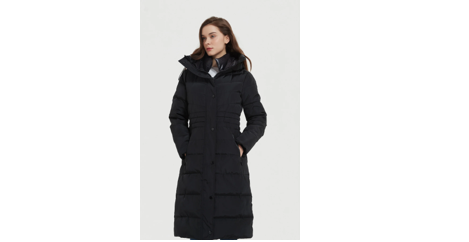What Font Should I Use? 5 Principles for Choosing Typefaces

Dress for the Occasion
Many of my beginning students go about picking a font as though they were searching for new music to listen to: they assess the personality of each face and look for something unique and distinctive that expresses their particular aesthetic taste, perspective, and personal history. Unfortunately, this approach is problematic because it places too much importance on individuality.
For better or worse, picking a typeface is more like getting dressed in the morning. Just as with clothing, there’s a distinction between expressive and stylish typefaces versus those that are useful and appropriate for many situations. Our job is to find the right balance for the occasion. While appropriateness isn’t a sexy concept, it’s the acid test that should guide our font choice.
Don’t Be a Wimp: The Principle of Decisive Contrast.
So, now that we know our families and some classic examples of each, we need to decide how to mix and match and — most importantly — whether to mix and match at all. First, of course, one typeface will most often do, especially if it’s one of our workhorses with many different weights that work together. But, if we reach a point where we want to add a second face to the mix, it’s always good to observe this simple rule: keep it the same, or change it a lot — avoid wimpy, incremental variations.
This is a general design principle, and its official name is correspondence and contrast. The best way to view this rule in action is to take all the random coins you collected on your last trip through Europe and dump them out on a table together. If you put two identical coins next to each other, they look good together because they match (correspondence). On the other hand, if we put a dime next to one of those big copper coins we picked up somewhere in Central Europe, this also looks interesting because of the contrast between the two — they look sufficiently different.
A Little Can Go a Long Way
‘Enough with all these conventional-looking fonts and rules!’ you say. ‘I need something for my rave flyer! And my Thai restaurant menu! And my Christmas Cards!’ What you’re pointing out here is that all the faces I’ve discussed so far are ‘body typefaces,’ meaning you could conceivably set a whole menu or newspaper with any of them; in the clothing analogy presented in part one,,, these are our everyday Levis. What about our Halloween flares?
Periodically, there’s a need for a font that oozes with personality, whether that personality is warehouse party, Pad Thai, or Santa Claus. And this need brings us into the vast wilderness of Display typefaces, including everything from Comic Sans to our candy-cane and bunny fonts.
Rule Number Five Is ‘There Are No Rules
Really. Look hard enough, and you will find a dazzling-looking menu set entirely in a hard-to-read display font. Or of two different Geometric Sans faces living happily together on a page (in fact, just this week, I wound up trying this on a project and was surprised to find that it hit the spot). There are only conventions, no ironclad rules about how to use type, just as there are no rules about how we should dress in the morning. It’s worth trying everything to see what happens — even wearing your Halloween flares to your court date.
Conclusion
Hopefully, these five principles will have given you some guidelines for selecting, applying, and mixing type and, indeed, whether to mix it at all. In the end, picking typefaces requires a combination of understanding and intuition and — as with any skill — demands practice. With all the different fonts we have access to nowadays, it’s easy to forget that there’s nothing like a classic typeface used well by somebody who knows how to use it.
Some of the best types of advice I ever received came early on from my first typography teacher: pick one typeface you like and use it over and over for months to exclude all others. While this kind of exercise can sometimes feel constraining, it can also serve as a helpful reminder that the quantity of available choices in the Internet age is no substitute for quality.



